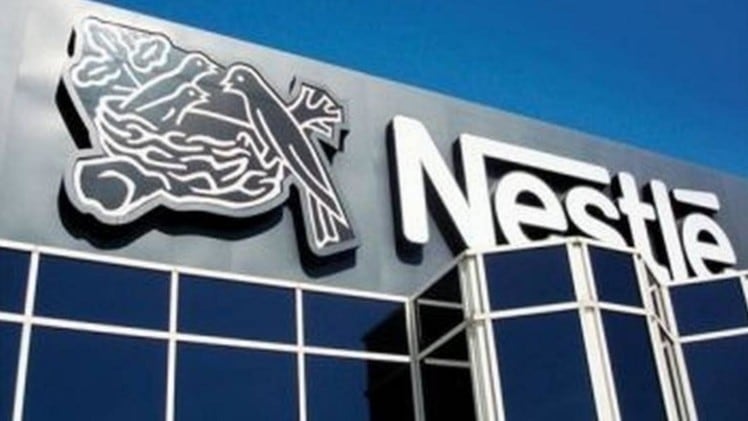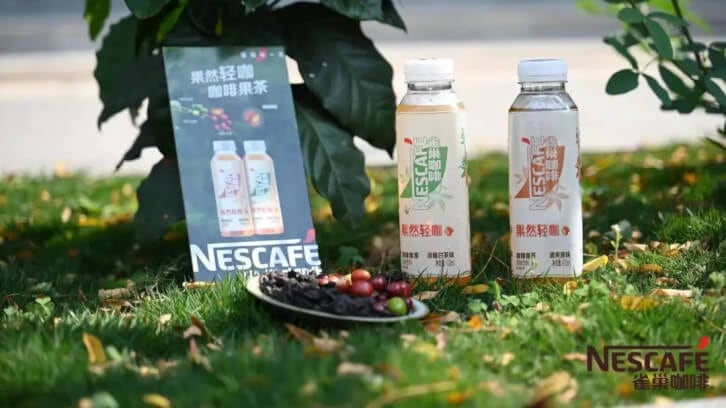Nestle has been actively seeking since the beginning of this year to return to ‘normalised’ growth led by Real Internal Growth (RIG), which is a measurement of growth generated by volume and product mix/innovation as opposed to growth generated by price hikes.
In its recent H1FY2024 financial results press conference which FoodNavigator-Asia attended, the firm reported an overall 2.1% year-on-year increase in organic growth and 0.3% year-on-year growth in its Underlying trading operating profit (UTOP) margin.
Nestle CEO Mark Schneider also highlighted the firm’s successful return to positive RIG, albeit just a small number of 0.1%, meaning that the overall 2.1% organic growth for the first half of the year was still being led by price hikes at 2.0%.
That said, this is the first time the firm has posted positive RIG since the negative impacts of the COVID-19 pandemic hit – its FY2023 results showed a decrease of -0.3% and its Q1FY2024 results showed -2.0%.
Schneider also highlighted that the Q2FY2024 results have actually shown a return to RIG-led growth – although the growth numbers were not specifically highlighted in his presentation, Nestle data has shown that Q2FY2024 organic growth came in at 2.8%, led by 2.2% RIG and 0.6% pricing.
“RIG momentum has been re-ignited across Nestle in the second quarter – [although this was negative for the overall H1 due to the Q1 RIG], in Q2 the business has returned to RIG-led growth,” he told the floor.
“This rebound was broad-based across our various zones and categories, as we prioritised driving volume, mix and market share [and one of our main growth drivers] was coffee.
“We significantly increased our new product launch intensity in the first half of the year [which has been crucial] in supporting our pivot back to RIG-led growth, such as our Nescafe cold-concentrate coffees [as these new] launches reinforce brand differentiation and offer retail partners broader consumer value propositions.
“So far this year, we have completed around 15% more innovation and renovation launches than in 2023, with a total planned increase to 20% by year-end.”
There can be no doubt that the firm has been investing a great deal into boosting its coffee portfolios, particularly in Asian markets such as Vietnam and China where new products have been rolling out at an accelerated pace over the past several months.
“Coffee was the largest organic growth contributor with mid single-digit growth, supported by our three leading global coffee brands Nescafé, Nespresso and Starbucks,” he added.
“In our Zone Asia, Oceania and Africa, we have seen an increase in market share gains within the RTD coffee market, and that growth is being driven by Nescafe and supported by new product launches such as the new espresso concentrate for cold coffee.
“Similarly, in Zone Greater China market share gains are being seen in soluble coffee and growth is being led by RTD Nescafe offerings as well as new product launches with functional benefits.”
Newly-interred Nestle CFO Anna Manz who recently replaced Francois-Xavier Roger highlighted that Zone AOA had seen resilient growth but continued to fae significant inflationary pressures.
“We have faced two significant headwinds in this market in the first half - The first challenge was substantial currency devaluations in a number of markets, which triggered corresponding inflation,” she told the floor.
“This required responsible pricing actions in those markets, taking into account local competitive conditions.
“The second challenge was ongoing pressure on global consumer brands in some markets linked to geopolitical tensions – but despite these challenges, this zone still delivered solid organic sales growth and continued momentum in affordable offerings.
“Zone Greater China on the other hand saw deflation particularly in Q2, but in this environment we are also seeing demand weaken and intensifying competition creating pricing pressure across much of the food and beverage industry.”
Looking ahead
Moving forward, Schneider stressed cautious optimism but continued commitment to the RIG strategy.
“As we enter the second half of the year, we remain confident of our RIG momentum, but the pricing environment has become more challenging,” he said.
“The general context is that consumers are under pressure, driving higher price elasticity, [which has increasingly] contributed to pressure on pricing as consumers seek value.
“The swing factor lately is increasing competitive intensity to address this environment - Retailers are competing for their share of a tighter consumer budget [so] food and beverage companies, in turn, are responding to a whole new level of promotional intensity across categories.
“We continue to focus investment behind our billionaire brands [such as] KitKat, Nescafe, Maggi and more, which together account for 70% of sales [as] we are confident that these brands provide the fastest route to growth, and have a full pipeline of product launches planned for the second half of the year.”





